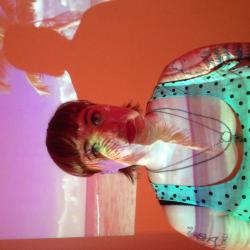To the untrained eye, Reykjavík appears to be a city with no lack of space devoted to art. For emerging artists, however, it can feel like a bastion for the privileged. One group of recent graduates from Iceland’s Academy of the Arts transformed their frustrations about the inaccessibility of the art world into their own haven—a multifold space including a gallery, an art bazaar and studio space which they called Kunstschlager.
Like many good things, the gallery was the product of opportunity and good timing. Gallery co-founder and recent art graduate Steinunn Harðardóttir set the process into motion one day while browsing Barnaland for something fun to buy and came across a post for a large, cheap space advertised as being good for artists. She rang up some artist friends to go check out the space and eventually they signed a lease together.
It was only afterwards that the idea of a gallery occurred to the group, which consists of Steinunn, Ásta Fanney Sigurðardóttir, Baldvin Einarsson, Claudia Hausfeld, Guðlaug Mía Eyflórsdóttir and Helgi Þórsson. “In the beginning we thought we would also use the upstairs for studios, but then we decided to do something else in that space,” Helgi said. “I had in mind for a long time that if I rented out a studio, I could have part of it as a showroom. I think we were all thinking the same.”
This common sentiment among the artists was largely borne from a sense that something was missing. “There aren’t that many opportunities and there are very few places to display art,” Helgi continued. Guðlaug agreed, citing her own ambivalence upon graduation from art school. “You basically have to do everything on your own and that’s exactly what we did,” she said. “We were very lucky to have this opportunity because three of us just graduated. Either you do it yourself or you wait 10–15 years to get into a museum.”
ACCESS PASSING
While there’s nothing surprising about the can-do DIY attitude of the young art community, it was surprising to hear that this was borne more out of necessity than desire, as Reykjavík has a reputation for fostering artistic events and talent. The Kunstschlager team took issue with this, however, pointing out that decent gallery spaces for emerging artists are few and far between. “For a consumer, it might seem like there is a lot going on, but for someone who needs a platform to show their art, there’s not much,” Claudia said.
Aside from a few free galleries that mainly show more established artists, such as the Living Art Museum and ASÍ, there are no spaces for emerging talent to gain visibility and have the chance to sell their works, having either closed (Crymo, Klósett) or been run ineffectively (Dvergur). Most exhibitions take place in state-run museums, which rotate every three months and charge admission. Kunstschlager aims to fill this gap by staying open for three hours every day except Sunday, rotating exhibits on a monthly basis and not charging for entrance.
The art bazaar is set up partially as a strategy to sustain the gallery financially, but mainly to provide a way for people to purchase art by emerging talents at a reasonable price. “Art is actually quite hard to get,” Guðlaug said. “We wanted to make a venue where that could happen easily without having to go to a fancy gallery.” There they also feature an “Artist of the Week,” a creative solution they came up with to deal with the high demand for exhibitions.
MORE, MORE, MORE
The group behind Kunstschlager had several ideas on how the local art-scape could improve, including more foreign exhibitors to break up the repetition of featured names, more diversity of spatial use and cooperation between artists to establish locations, and more colour, risk and extravagance in the content of exhibitions.
Their most resonant desire, of course, was funding. Although the group have recently received a modest grant from the City of Reykjavík, they have all had to continue working day jobs to maintain the gallery, which prevents them from extending their opening hours. “The art world definitely needs more money,” Helgi said. “I think if there was more money then there would be more spaces, more buyers and more foreign artists. It would just lead to more in general.”
Buy subscriptions, t-shirts and more from our shop right here!
















